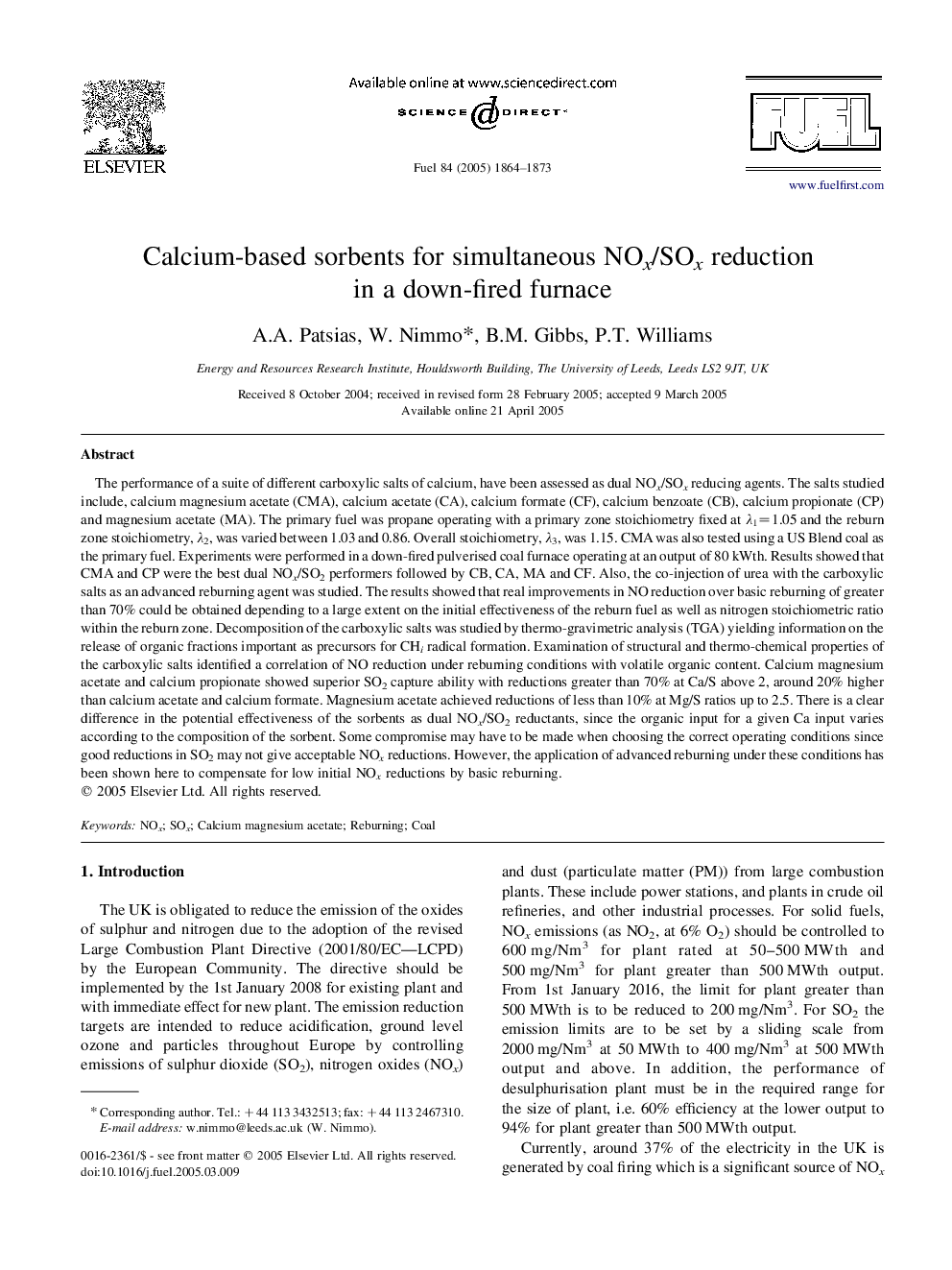| Article ID | Journal | Published Year | Pages | File Type |
|---|---|---|---|---|
| 9629085 | Fuel | 2005 | 10 Pages |
Abstract
The performance of a suite of different carboxylic salts of calcium, have been assessed as dual NOx/SOx reducing agents. The salts studied include, calcium magnesium acetate (CMA), calcium acetate (CA), calcium formate (CF), calcium benzoate (CB), calcium propionate (CP) and magnesium acetate (MA). The primary fuel was propane operating with a primary zone stoichiometry fixed at λ1=1.05 and the reburn zone stoichiometry, λ2, was varied between 1.03 and 0.86. Overall stoichiometry, λ3, was 1.15. CMA was also tested using a US Blend coal as the primary fuel. Experiments were performed in a down-fired pulverised coal furnace operating at an output of 80 kWth. Results showed that CMA and CP were the best dual NOx/SO2 performers followed by CB, CA, MA and CF. Also, the co-injection of urea with the carboxylic salts as an advanced reburning agent was studied. The results showed that real improvements in NO reduction over basic reburning of greater than 70% could be obtained depending to a large extent on the initial effectiveness of the reburn fuel as well as nitrogen stoichiometric ratio within the reburn zone. Decomposition of the carboxylic salts was studied by thermo-gravimetric analysis (TGA) yielding information on the release of organic fractions important as precursors for CHi radical formation. Examination of structural and thermo-chemical properties of the carboxylic salts identified a correlation of NO reduction under reburning conditions with volatile organic content. Calcium magnesium acetate and calcium propionate showed superior SO2 capture ability with reductions greater than 70% at Ca/S above 2, around 20% higher than calcium acetate and calcium formate. Magnesium acetate achieved reductions of less than 10% at Mg/S ratios up to 2.5. There is a clear difference in the potential effectiveness of the sorbents as dual NOx/SO2 reductants, since the organic input for a given Ca input varies according to the composition of the sorbent. Some compromise may have to be made when choosing the correct operating conditions since good reductions in SO2 may not give acceptable NOx reductions. However, the application of advanced reburning under these conditions has been shown here to compensate for low initial NOx reductions by basic reburning.
Related Topics
Physical Sciences and Engineering
Chemical Engineering
Chemical Engineering (General)
Authors
A.A. Patsias, W. Nimmo, B.M. Gibbs, P.T. Williams,
